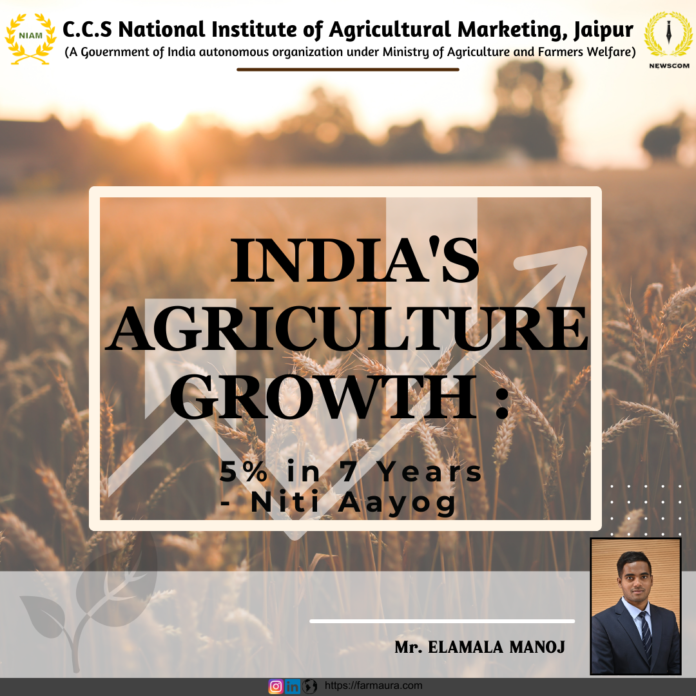NITI Aayog has indeed reported a commendable growth rate of 5% for India’s agriculture sector over the past seven years, from 2016-17 to 2022-23. This achievement places India at the top globally in terms of agricultural GDP growth in the last decade, according to World Bank data. Agricultural growth in the last 15 years has saved many countries from economic collapse. The share of agriculture in the world GDP has risen from 3.2 per cent in 2006 to 4.3 per cent in recent years. Implications of 5% Growth are Food security sustained growth ensures food availability and affordability for a growing population, Rural development Agriculture being the backbone of the rural economy, its growth leads to increased rural incomes and employment, Export potential Higher production enables India to increase agricultural exports, earning valuable foreign exchange. Key factors contributing to growth are : Government Initiatives: Several government schemes and policies, such as the Pradhan Mantri Krishi Sinchai Yojana (PMKSY) for irrigation, soil health cards, and minimum support prices, have played a crucial role. Technological Advancements: Increased adoption of technology, including improved seeds, fertilizers, and farm machinery, has enhanced productivity. Diversification: A shift towards high-value crops and horticulture has contributed to better income
The agricultural sector has been a cornerstone of India’s economy, providing sustenance to a billion-plus population. Despite facing numerous hurdles such as climate change, land degradation, and market volatility, the sector has exhibited a steady upward trend. This growth is not merely a statistical figure but a reflection of the hard work and dedication of millions of farmers who have toiled tirelessly to feed the nation. The consistent growth rate of 5% is a significant milestone, showcasing India’s potential to become a global agricultural powerhouse. The sector’s ability to face economic storms and natural calamities underscores its robustness. Moreover, it has played a pivotal role in reducing poverty and ensuring rural development. However, while the overall growth is commendable, it is essential to acknowledge the disparities within the sector. Small and marginal farmers continue to face challenges, and regional imbalances in agricultural productivity persist. Additionally, the sector’s vulnerability to climate change remains a pressing concern. To sustain this growth momentum, it is imperative to address these challenges proactively. Diversification of crops, strengthening value chains, and promoting sustainable agricultural practices are crucial steps. Furthermore, investing in research and development, improving market infrastructure, and empowering farmers through education and skill development are essential for the sector’s long-term prosperity.
Conclusion :
India’s agricultural journey is a story of resilience, adaptation, and progress. The 5% growth rate is a testament to the sector’s potential. By building upon this foundation and addressing the existing challenges, India can not only ensure food security for its population but also emerge as a global leader in sustainable agriculture.




